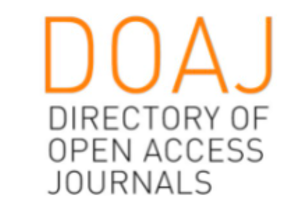HYPERCOMPETITION & FISCAL ATTRACTIVENESS
DOI:
https://doi.org/10.1515/eoik-2017-0007Keywords:
tax optimization, harmful competition, aggressive tax planning, transfer pricing, tax havens, lobbying, subventions, fiscal incentives, flat taxAbstract
Hypercompetition is at the very center of modern economies. As a consequence, both states and enterprises have been heavily engaged in an amoral power game (Colonomos, 2005) based exclusively on strength where tax systems have a prominent role. An obscure fiscal war takes place firstly between states seeking to increase their attractiveness. On the other hand, firms fight against states to optimize their revenues. Therefore, the aim of this paper is to discuss the components and the implications of the competition between states expressed through the establishment of tax havens and the launch of merciless fiscal policies. At the same time, enterprises try to shape the existing laws in a manner that favors their interests, using also aggressive fiscal strategies.
References
Ad hoc Groupe d’Experts on International Cooperation in Tax Matters (1987), Prevention ofabuse of tax treaty, Mettong, Geneva, 30 Nov-11 Déc.
ALLES, M. AND DATAR, S. (1998), “Strategic Transfer Price”, Management Science, 44 (4):451 – 461
ATTISNAS MG, KLEMM A.,(2016), The growth impact of discretionary fiscal policymeasures, Journal of Macroeconomics, N°49, 265–279.
AVENI, R. D’ (1995) Hypercompétition, Paris, Vuibert.
BARTELSMAN, E. AND BEETSMA, R. (2003), “Why pay more? Corporate tax avoidancethrough transfer pricing in OECD countries”, Journal of Public Economics 87: 2225–2252
BRENNAN, G. BUCHANAN, J.M. (1980), The power to tax, Cambridge University Press.
BUETTNER, T., OVERESCH, M., SCHREIBER, U. AND WAMSER, G. (2012), “The impact of thin-capitalization rules on the capital structure of multinational firms”, Journal of Public Economics, December, Vol. 96, Issue 11/12: 930-938
BUTTNER T, RUF M (2007), Tax incentive and the location of FDI: evidences from a panel of german multinationals, International Taw and Public Finances, N°14, 151-164.
CAVALLARI L., ROMANO S. (2017),Fiscal policy in Europe: The importance of making it predictable, Economic Modeling, N°60, 81–97
CHAVAGNEUX, C. (2016), Paradis fiscaux: est-ce le début de la fin?, Alternatives économiques, Hors série 108, 70-71.
CHOI, F. D. AND MEEK, G. K. (2009), “International Accounting (Fifth ed.)”, India: Dorling Kindersley (India) Pvt. Ltd.
CLAUSING, K. (1998), “The Impact of Transfer Pricing on Intrafirm Trade”, NBER Working Paper No. 6688
COLONOMOS A (2005), La morale dans les relations internationales, Odile Jacob.
CRAVENS, K. S. (1997), “Examining the role of transfer pricing as a strategy for multinational firms”, International Business Review, 6 (2): 127-145
CRUCERU, LB. (2005), Treaty shopping and the abuse of income tax conventions, Thesis for he degree of Mastes of Law, Institut of comparative law, Mc Guill, Canada.
DISCHINGER, M. AND RIEDEL, N. (2011), “Corporate taxes and the location of intangible assets within multinational firms”, Journal of Public Economics 95: 691-707
DUNBAR, A. AND POGUE, T. (1998), “Estimating flat tax incidence and yield: a sensitivity analysis”, National Tax Journal, Vol. 51 no. 2 (June1998) pp. 303-24
EDEN L, KUDRLE RT. (2005), Tax havens: renegade states in the international tax regime? Law & Policy,27/1, 100-127.
ERNST AND YOUNG (2007), Global transfer pricing surveys 2005-2006, Tech. rep.
ESTIVAL L. (2006), Les subventiosn aux effets dévastateurs, Alternatives Economiques, Octobre, N° 251.
FOX WF, MURRAY MN (2004), Do economic effects justify the use of fiscal incentives?, Southern Economic Journal, 71/1, 78-92.
GABRIELSEN, T. S. AND SCHJELDERUP, G. (1999), “Transfer Pricing and Ownership Structure”, The Scandinavian Journal of Economics, 101 (4 (Industrial policy in Open Economies): 673-688
GAO, L. AND ZHAO, X. (2015), “Determining intra-company transfer pricing for multinational corporations”, Int. J. Production Economics 168: 340–350
GORODNICHENKO, Y., MARTINEZ-VAZQUEZ, J. AND SABIRIANOVA PETER, K. (2008), “Myth and Reality of Flat Tax Reform: Micro Estimates of Tax Evasion Response and Welfare Effect in Russia”, Working Paper 08-25, June, Department of Economics W.J. Usery Workplace Research Group
GRUBERT, H. (1998), “Taxes and the division of foreign operating income among royalties, interest, dividends and retained earnings”, Journal of Public Economics 68: 269-290
GRUBERT, H. (2003), “Intangible income, intercompany transactions, income shifting, and the choice of location”, National Tax Journal 56: 221-242
HIELSCHER, K. AND KANEKO, T. (1999), ‘‘Japan’’ (transfer pricing: an international guide to tax), International Tax Review Special supplement, February: 33–39
HINES, J.R. AND HUBBARD, R.G. (1990), “Coming home to America: Dividend repatriations by US multinationals”, In: Razin, A., Hubbard, R.G. (Eds.), Taxation in the Global Economy. University of Chicago Press, Chicago
HIRSHLEIFER, J. (1956), “On the Economics of Transfer Pricing”. J. Bus. 29(3): 172–184.
HUBERT F., PAIN N. (2002), Fiscal incentives European integration and the location of FDI, The Manchester School, 70/3, 336-363.
HURDUZEUA G, LAZARA MI, POPESCUME (2015), An assessment of enhanced competitiveness through fiscal Devaluation, Procedia Economics and Finance, 22, 262– 267.
IVANOVA, A., KEEN, M. AND KLEMM, A. (2005), “The Russian Flat Tax Reform,” Economic Policy 20(43): 397-444
KEENE, M., KIM, Y. AND VARSANO, R. (2008), “The “flat tax(es)”: principles and experience”, Int. Tax Public Finance 15: 712–751
KEY, SJ, TERRELL HS.(1988), International Banking Facilities, International finance Discussion N° 333, https://www.federalreserve.gov/pubs/ifdp/1988/333/ifdp333.pdf:
KROGSTRUP S. (2004), A synthesis of recent development in the theory of capital tax competition, EPRU Working Paper Series, N°04-02, Economic Policy Research Unit, Univerity of Copenhagen.
LEE, N. AND SWENSON, C. (2016), “Taxation Effects of overseas subsidiaries on worldwide corporate taxes”, Journal of International Accounting, Auditing and Taxation 26: 47-59
LEWIS, D. (2001), “Regional guides: Asia–Australia”, International Tax Review 2, 3
LIAPIS, KJ, GALANOSCL, POLITISED, KANTIANISDD. (2013), Quantitative approach to measure tax competitiveness between EU countries, International Journal of Economic Sciences and Applied Reaserch, 7/3,7-23.
LOHSE, T. AND RIEDEL, N. (2012), “The impact of transfer pricing regulations on profit shifting within European multinationals”, FZID Discussion Papers, No. 61-2012, Hohenheim University
LUKOVIC, S. (2015), The impact of globalization on the caracteristics of European countries’ tax systems, Economic Annals, LX/206, 117-139.
MARTINI, J. T. (2005), “Transfer Pricing for Coordination and Profit Determination: An Analysis of Alternative Schemes”, Discussion Paper, Bielefeld University, Department of Business Administration and Economics
MARTINI, J. T., NIEMANN, R. AND SIMONS, D. (2007), “Transfer pricing or formula apportionment? Tax-induced distortions of multinationals’ investment and production decisions”
MEHTA S. (2015), OECD’s draft proposal on treaty shopping and treaty abuse situations, The Tax Advisor, August, 31.
METZ, R. (1961), Users of tax havens. Abroad batten down for political gale, The New York Times, February 26.
MIHU, S. (2012), Tax havens and the money laudering phenomenon, Economics, Management and Financial Markets, 7/4, 386-396.
NIELSEN, S. B., RAIMONDOS-MYLLER, P. AND SCHJELDERUP, G. (2001), “Formula Apportionment and Transfer Pricing Under Oligopolistic Competition”
O’CONNOR, W. (1997), “Internation al transfer pricing”. In: Frederick D.S.C. (Ed.), International Accounting and Finance Handbook, Second Ed. Wiley, New York
OECD (2004) Concurrence, subventions et aides d’Etat, Revue de l’OCDE sur le droit et la politique de la concurrence, Vol16, 1&2.
OECD (2007 a), Economic surveys, United Kindom.
OECD (2007), Tax effects on foreign direct investment, OCDE Tax policy studies, N°17.
PALAN, R. (1998), Trying to have your cake and eating it: how and why the states have created offfshore, International Studies Quarterly, Vol.42, 625-643.
PALAN, R. (2002), Tax haven and the commercialization of state sovereignty.” International organization, Vol.56, 151-176.
PALAN, R.(2011), The history of tax havens, History & Policy, January 20. http://www.historyandpolicy.org/papers/policy-paper-92.html.
PENDSE, S. (2012), “International transferpricing: A review of non-tax outlook”, Procedia - Social and Behavioral Sciences 37: 337 – 343
PERROT, E.(2016), Les paradis fiscaux à l’ombre de la morale.” Problèmes économiques, Septembre, 52-57.
PICCIOTTO (2009), How tax havens helped to create a crisis, Financial Times, May 5.
PORSSE A., HADDAD E., RIBEIRO ED. (2006), Economic effects of tax incentives: ageneral equilibrium approach, Latin American Business Review, Vol 71, 3&4, 195-216.
PRYCE G.(2003), Greening by the market? Distortions caused by fiscal incentive to build a brownfield land, Housing Studies, 18:4, 563-585.
RABUSHKA, A. (1985), “The flat tax”, working paper Switzerland, Progress foundation RADU, DI.(2012), Tax havens impact on the world economy, Procedia Social and Behavioral Sciences, Vol 62, 398-402. Regards croisés sur l’économie (2007), Numéro spécial : quelle fiscalité pour quels objectifs ? 2007/1
ROUGE, JF (2016), Droit fiscal international, Polycopié M2 MAE, ESFAM, Sofia.
RUBINGER JL. (2007), Treaty shopping: is it still a viable option?, Corporate Business Taxation Monthly, May, 13-22.
SAKURAI, Y. (2002), “Comparing cross-cultural regulatory styles and processes in dealing with transfer pricing”, International Journal of the Sociology of Law 30: 173–199
SCHIAU, L.-L. AND MOGA, A. C. (2009), “The flat tax effects – theoretical and empirical evidence in western and eastern European countries”, working paper, steconomiceuoradea.ro, University Cluj-Napoca
SELDON, B. J. AND BOYD, R. G. (1996), “The economic effect of a flat tax”, NCPA Policy report № 205, June Seligmann, E. (1914), Essais sur l’impôt, Paris, Girard de Brière
SIKKA, P. AND WILLMOTT, H. (2010), “The dark side of transfer pricing: Its role in tax avoidance and wealth retentiveness”, Critical Perspectives on Accounting 21 (2010) 342–356
SOCOL, C., SOCOL, A. AND MARIUS, M. (2009), “Traps of the flat tax in emerging countries”, African Journal of Business Management Vol.3 (11), pp. 781-785, November
STIGLITZ, J.(2016), Press release: Zero tolerance needed against tax secrecy, November 16. http://www.europarl.europa.eu/news/en/news-room/20161115IPR51216/zero-tolerance-againsttax-secrecy-says-former-panamanian-advisor-stiglitz, 2016.
STUART, A. (2009), “Transfer Pricing: A World of Pain”, CFO Magazine, September
TAN-NGOYEN, F., (2000), “Transfer pricing: protection needs to ensure hive of activity”, International Tax Review, Guide to the leading Asia Pacific Law and Tax experts (supplement), December
TISDELL, C. A. (1989), “Transfer Pricing: Technical and Productivity Change within the Firm”, Managerial and Decision Economics: 253 – 256
TONNEL, M. (2000), L’offshore, Revue Française de Finances publiques,Vol 56, 95 s.
VASILIAUSKAITE, A., STANKEVICIUSE.(2012), Fiscal policiy performance assesment in the context of international competitiveness, cases of EU Coutries, Economics and Management, 17/2: 493-501.
VAYSMAN, I. (1996), “A Model of Costbased Transfer Pricing”, Rev. Account. Stud. 1: 73-78
WEISBACH, D. (2000), “Ironing Out the Flat Tax”, 52 Stanford Law Review 599
WILSON, T., FULLWOOD V. (2013), “Tax havens and tax equity.” Journal of Applied Financial Research.
WULF L. de, Fiscal incentive for industrial exports in developed countries, Vol XXI, 45-52.
ZAGLER, M., DURNECKER,G.(2003), Fiscal policy and economic growth, Journal of Economic Surveys, 17/3, 397-418.
ZUCMAN, G. (2013), La richesse cachée des nations. Enquête sur les paradis fiscaux, Le Seuil, Col. La république des idées.
Downloads
Published
How to Cite
Issue
Section
License
Copyright (c) 2016 Oikos Institute - Research Centre

This work is licensed under a Creative Commons Attribution-NonCommercial-NoDerivatives 4.0 International License.




















